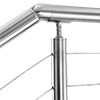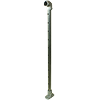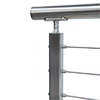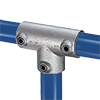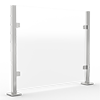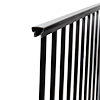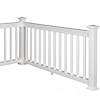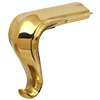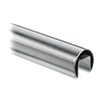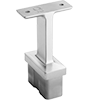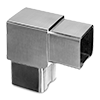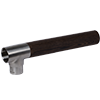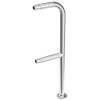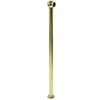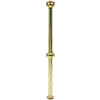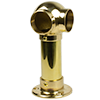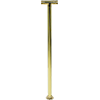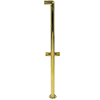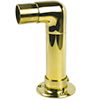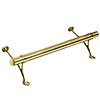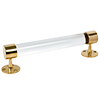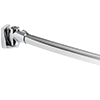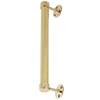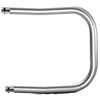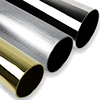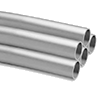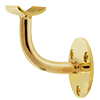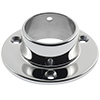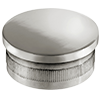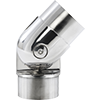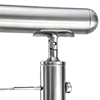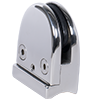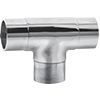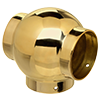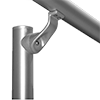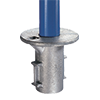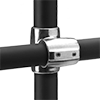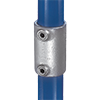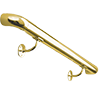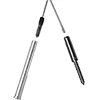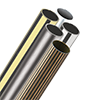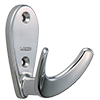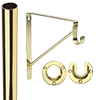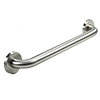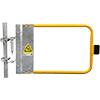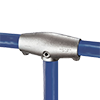How To Measure Pipe Size
When you are working with pipes, knowing how to measure pipe size and getting the correct pipe sizes to suit your project is essential.
If you do not know how to measure pipe diameter and find yourself with the wrong metal or PVC pipe sizes and pipe fittings, your entire project might be impossible to complete.

This guide will cover all you need to know about pipe dimensions, explaining some of the commonly used terms in the piping world like nominal pipe size and schedule pipe sizes, and providing several methods for figuring out pipe diameter.
This information should help you calculate the correct pipe measurements for all your projects in the future.
Identify the Threads
Before we get into the details of PVC pipe measurements and answer questions like "Is pipe measured by ID or OD?" it is important to focus on the first essential step of measuring pipe: figuring out the diameter.
One of the first things you need to know before finding the precise diameter is whether or not you have male or female threads, or no threads at all.
For those who are not quite sure, threads are the small grooves on the ends of certain pieces of pipe and tubing. They can be found in various forms, such as tapered threads and straight threads, and they are divided into two main categories: male and female.
To tell the difference between them and eventually find the nominal diameter of the pipe, you need to take a closer look:
- Male threads are found on the outside of the pipe and are clearly visible around the outer edge.
- Female threads are located inside the pipe walls and are harder to spot from the outside.
Finding the Nominal Diameter for Male Threads or No Threads
Whether you are working with a 40 PVC pipe, a schedule 80 pipe, or something totally different, if it has either male threads or no threads, you should measure the outside diameter, typically using a piece of string or a flexible measuring tool.
For male threads, you can wrap the string or tape around the outside of the pipe to figure out the circumference, and then divide the number you get by Pi or 3.14. This will give you the outside diameter of your male threaded pipe.
For instance, if you find that the circumference of the pipe is 12", you can divide it by Pi and get a result of 3.819", which is the outside diameter. Once you have the OD of your pipe, you can convert it using a nominal diameter chart to find the threads per inch.
Nominal Diameter Conversion Chart (in Inches)
| Outside or Inside Diameter | Decimal Equivalent | Nominal Diameter | Typical Threads Per Inch |
| 5/16 | 0.313 | 1/16 | 27 |
| 13/32 | 0.405 | 1/8 | 27 |
| 35/64 | 0.540 | 1/4 | 18 |
| 43/64 | 0.675 | 3/8 | 18 |
| 27/32 | 0.840 | 1/2 | 14 |
| 1-3/64 | 1.050 | 3/4 | 14 |
| 1-5/16 | 1.315 | 1 | 11-1/2 |
| 1-21/32 | 1.660 | 1-1/4 | 11-1/2 |
| 1-29/32 | 1.900 | 1-1/2 | 11-1/2 |
| 2-3/8 | 2.375 | 2 | 11-1/2 |
| 2-7/8 | 2.875 | 2-1/2 | 8 |
| 3-1/2 | 3.500 | 3 | 8 |
| 4 | 4.000 | 3-1/2 | 8 |
| 4-1/2 | 4.500 | 4 | 8 |
For example, if the OD of your pipe is 1.66” (1 1/2” IPS), then using the chart you would determine that the nominal diameter is 1 ¼ with 11 ½ threads per inch.
This is one of the simplest methods for how to measure pipe and can help you get an accurate result each time.
Finding the Nominal Diameter for Female Threads
When it comes to how do you measure pipe with female threads, the process is slightly different. To measure PVC pipe that has been identified as female, you will need to make use of another tool such as a ruler or caliper to measure the inside diameter.
The inside diameter is the distance across the center of the pipe or the pipe's actual hollow part, not including the walls.
Once you find the ID of your pipe, you can use a nominal diameter chart to find the threads per inch of your female threads.
Key Terms to Know
In order to better understand how to measure pipe thread and how to measure pipe fittings, there are some key terms you should know:
- OD - OD stands for outside diameter: This is the diameter of the pipe's very outer parts, from one far edge to the other. As mentioned above, it is a useful measurement when working with piping with male threads.
- ID - ID stands for the inside diameter of the pipe: This is measured by looking at a cross-section of hollow pipe and measuring the distance between the interior edges.
- Schedule: The schedule of a pipe tells us its wall thickness. Thickness can be obtained by taking the difference between the OD and ID. PVC pipe and fittings can often be categorized by schedule, with some having much thicker walls than others. The schedule is often abbreviated to Sch or Sched, and standard PVC sizing options and schedule numbers include Sch 40 and Sch 80.
- Nominal: When looking at how to measure PVC pipe size or how to measure PVC pipe diameter, you'll also see the word 'nominal' or the term 'nominal pipe size' (NPS) appearing quite often too. Nominal pipe size is simply a convenient way of dividing pipes into easy to remember sizes. It's a system that is designed to make buying, selling, and using pipes easier. For instance, a pipe with a diameter of 1.05" has an NPS of 3/4. Instead of going to a store and asking for a 1.05" pipe, people can simply ask for a 3/4 pipe to make the process easier for everyone. You can find a nominal pipe size chart online to find common NPS measurements.
Ultimately, when you are working with piping and want to figure out how to measure threaded pipe length or how to measure pipe thread fittings, the process can seem quite complicated at first.
It involves knowing quite a lot about how this specific form of measurement works and understanding the terms listed above, like the nominal diameter definition.
You also need to know how to use a pipe diameter measuring tool. There are various tools available when it comes to knowing how to measure pipe size.
Examples include OD tapes, pipe tape measure, and a pipe measurement chart, as well as simple pieces of string or flexible measuring tapes. Once you understand the key terms and comprehend the importance of NPS, the answer to the question "how do you measure PVC pipe" becomes much easier to understand.
It is also important to remember that this system only applies with pipes. How to measure tubing is a totally different system, as a typical tube is very different from a PVC pipe or PVC fitting.











